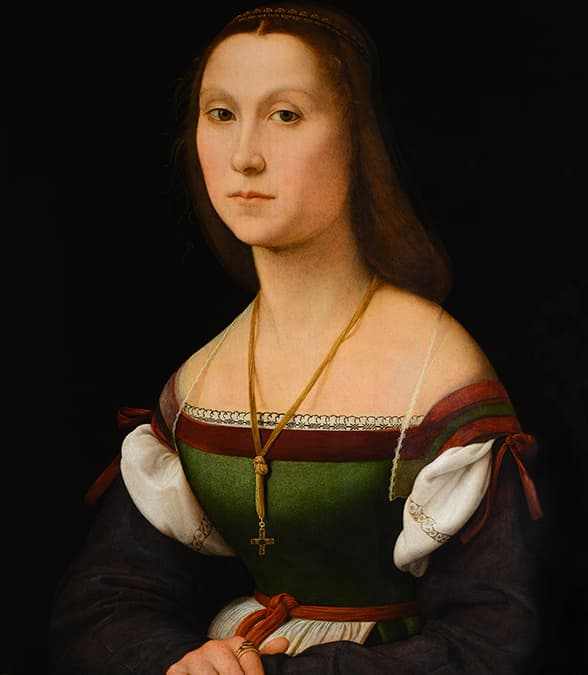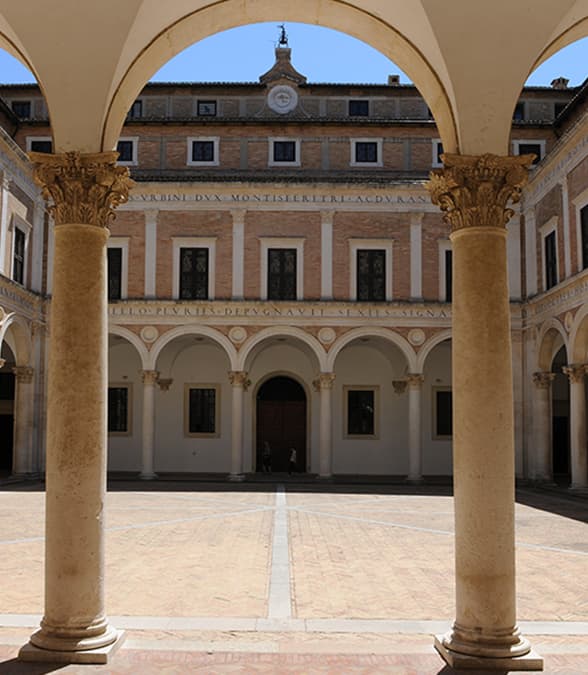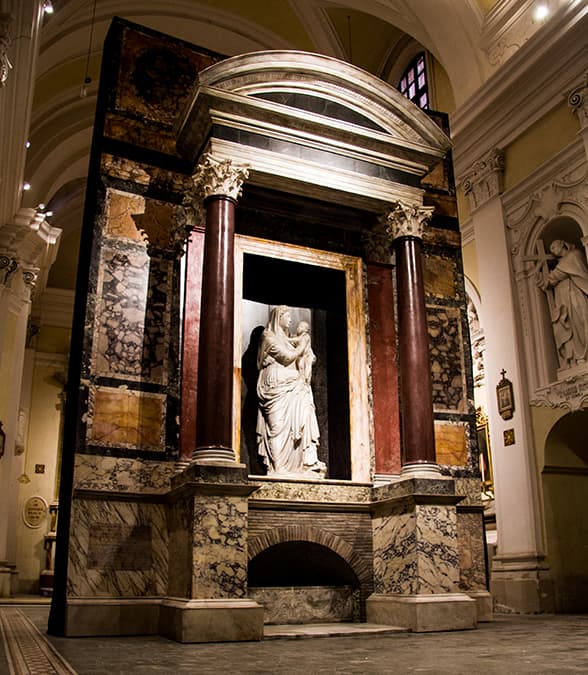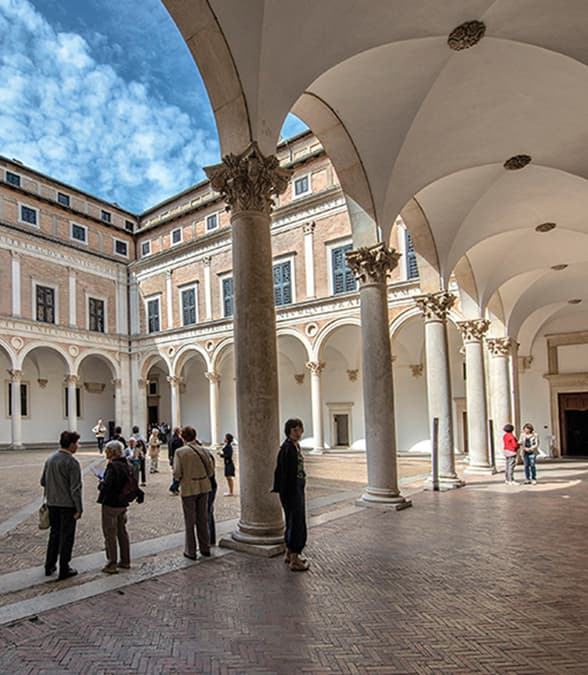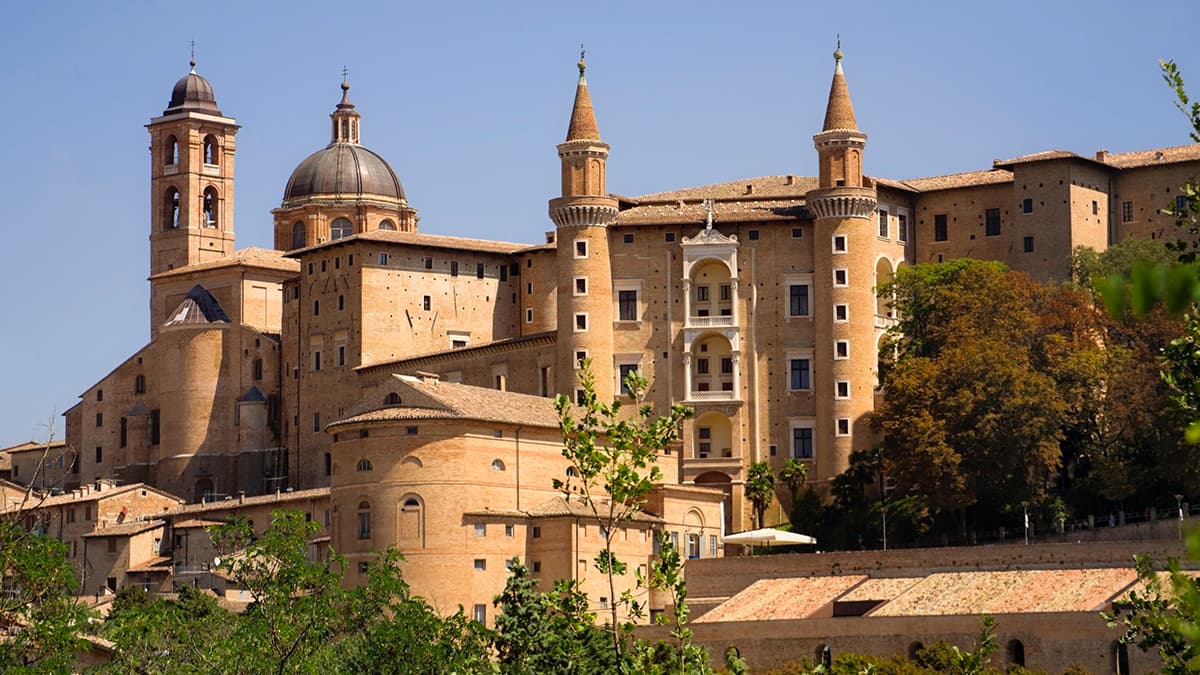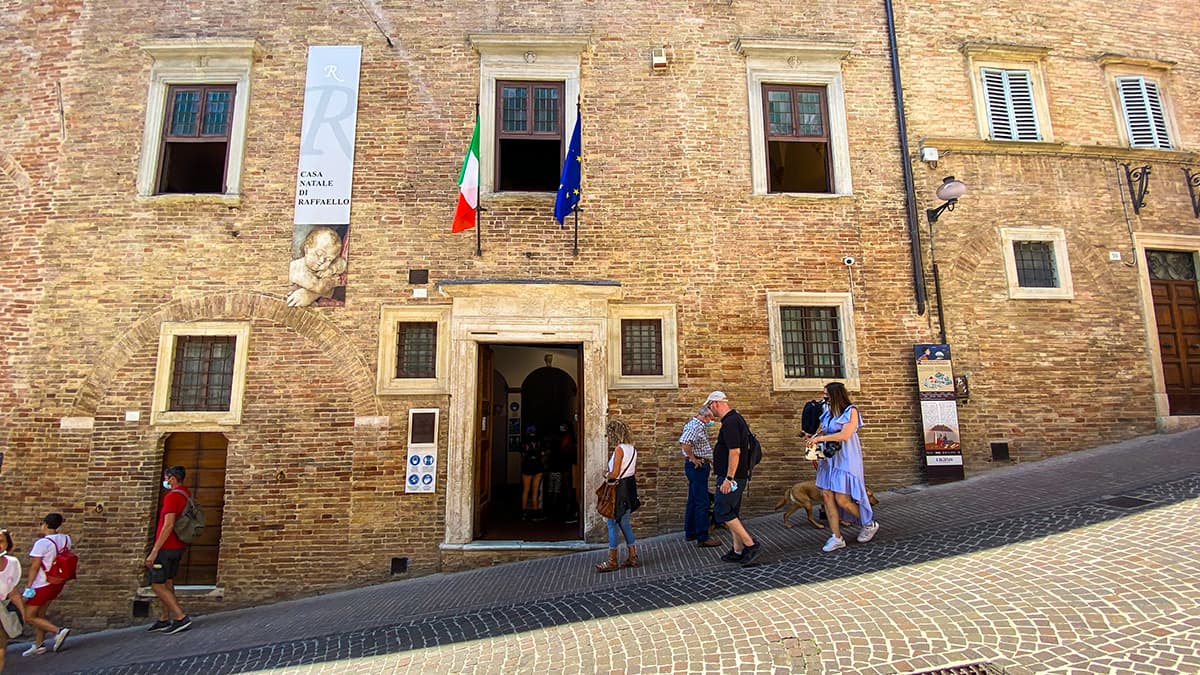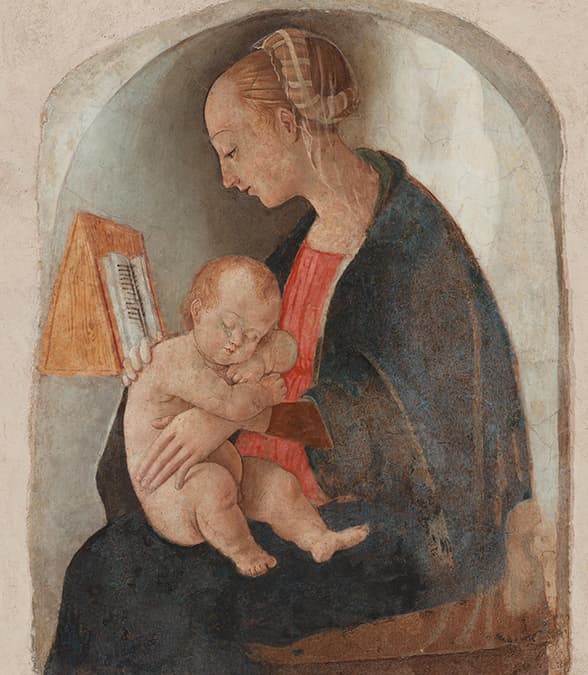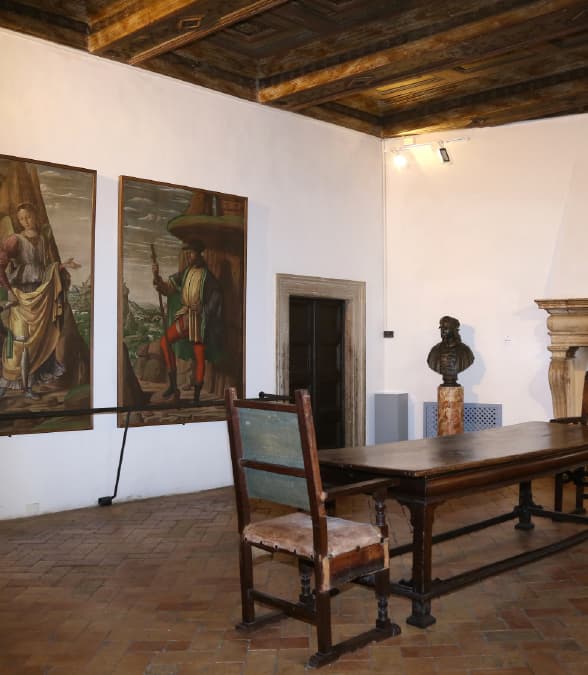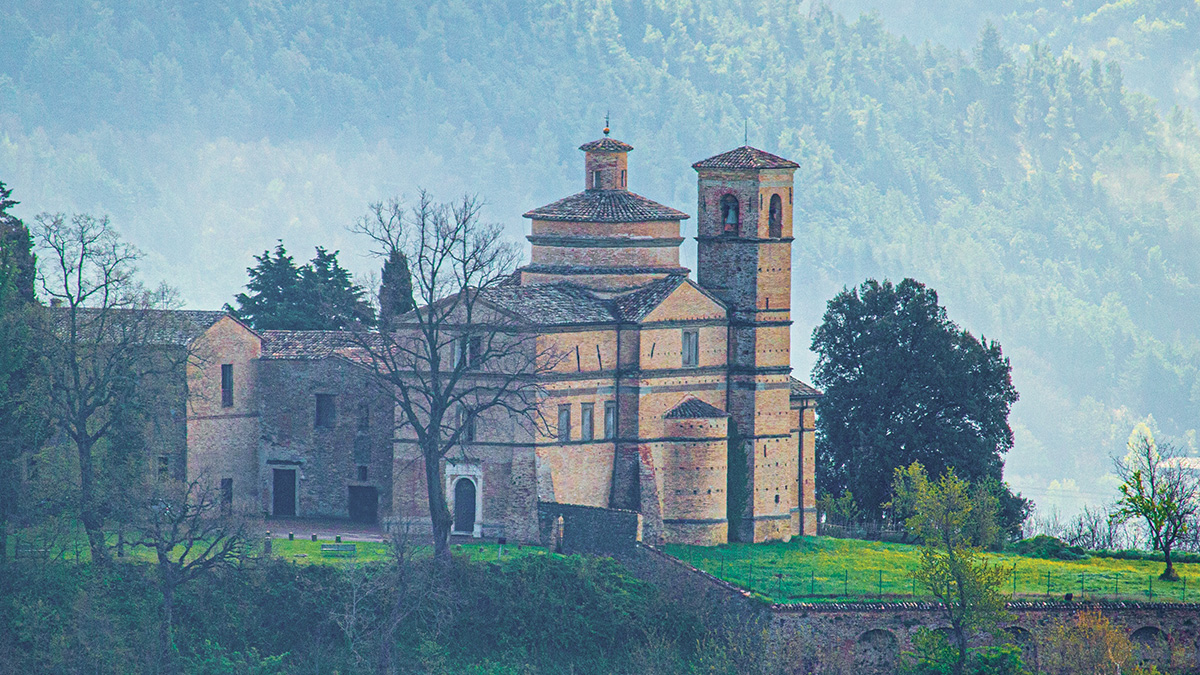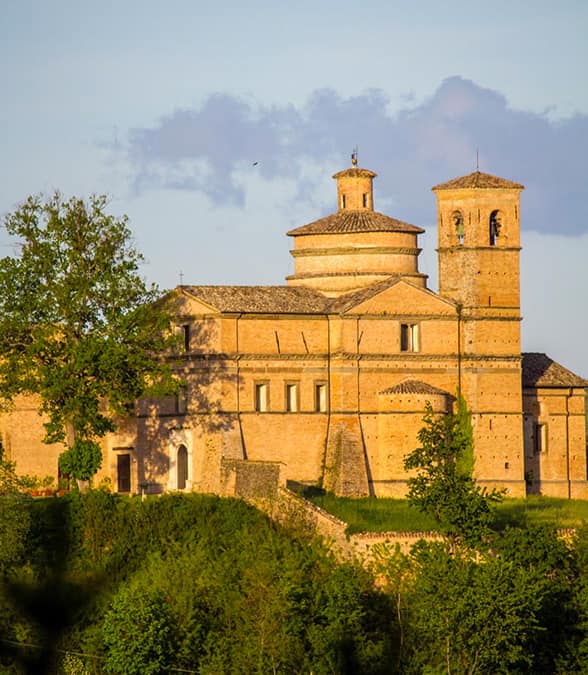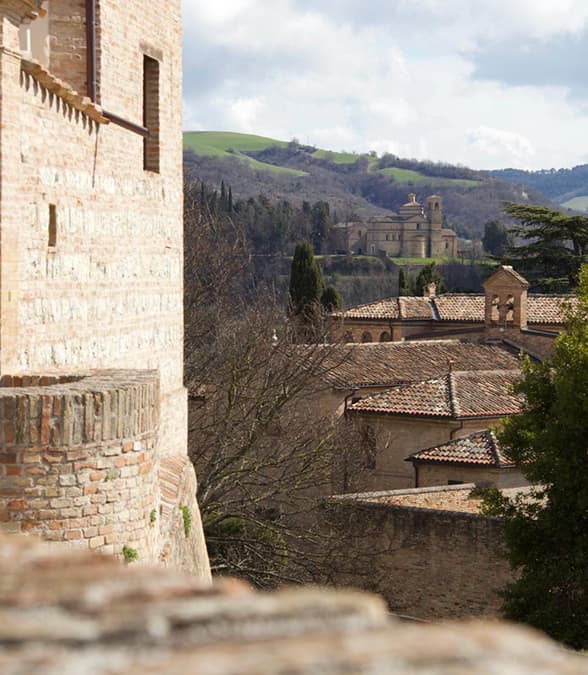Federico di Montefeltro was one of the greatest figures of the Renaissance and he made Urbino into one of Europe’s most important centers of culture. Federico came to power at just 22 years of age. The way was opened up to him by a conspiracy, organized by nobles in the city: the families of Urbino were tired of the continued abuses of power they suffered at the hands of the much-hated duke, Oddantonio di Montefeltro, just eighteen years old, and they encouraged the uprising that led to Oddantonio’s death. On 23 July 1444, the very day on which Oddantonio met his violent end, Federico was welcomed in Urbino, where he signed a pact to take control of his new domain.
Federico di Montefeltro was a soldier and one of the most powerful commanders of his time. However, he was also one of the most enlightened men of the Renaissance. Together with his brother, Ottaviano Ubaldini della Carda and his wife, Battista Sforza, in just a few decades, he transformed a small town into a prestigious court, frequented by all the most important artists, architects, humanists, prelates, and ambassadors.
Federico came to Urbino with the title of Count and on 23 August 1474, with a papal investiture, he was made a duke. In just a few years, he had extended his political alliances, expanded his Dukedom, and guaranteed stability and well-being for all of his subjects.
Architects and artists Piero della Francesca, Luciano Laurana, Francesco di Giorgio Martini, Leon Battista Alberti, Luca Pacioli, Paolo Uccello, Pedro Berrugete, Giusto di Gand, and Giovanni Santi all worked at his court.
The symbol of Federico di Montefeltro’s cultural vision was the spectacular Ducal Palace and its marvelous Library, which contained some thousand manuscripts, decorated by the very best master illustrators of the period. It was thanks to Federico that Urbino became the capital of Humanist mathematics, of studies on art and perspective, and the very heart of the best in western culture.
Federico di Montefeltro died on 10 September 1482, at the age of 60, leaving his duchy to his ten-year-old son, Guidubaldo. The new duke grew up under the care of Ottaviano Ubaldini della Carda, the most important figure at the Court of Urbino, ever-present and always perfectly in tune with Federico. The true alter ego of the Duke of Urbino.
